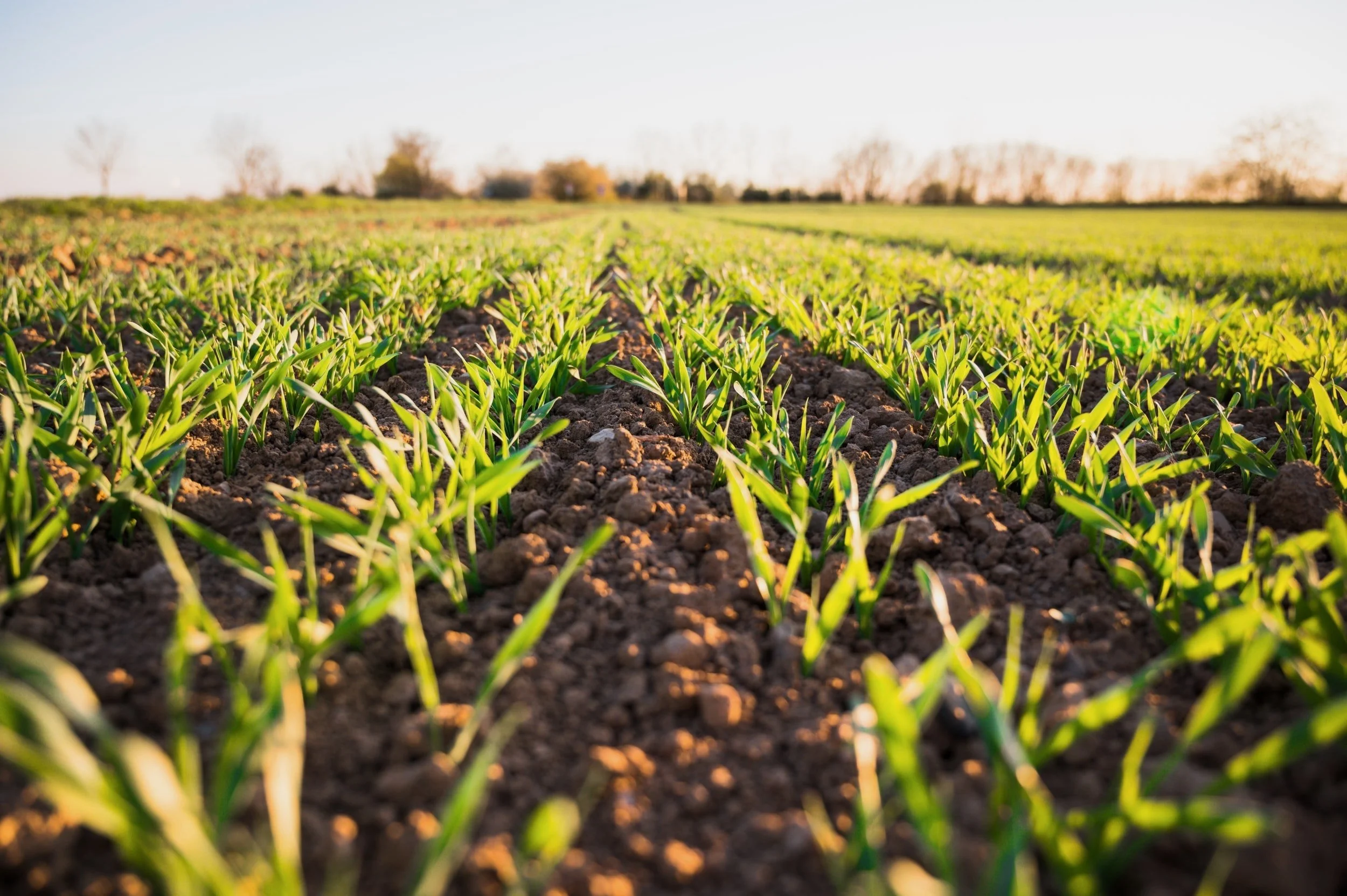
European Regenerative Farmland Investments
We create alpha for institutional investors by buying traditionally managed farmland and convert it to regeneratively managed farmland.
How our farmland investments create alpha
By managing farmland regeneratively we improve farming profits and reduce yield volatility. This is how we create alpha. In specific, by using regenerative farming practices, we sequester carbon and store it in our soils. The carbon sequestered leads to an increase in soil organic matter (SOM). A 1% increase in SOM leads to a 3.7% increase in water holding capacity. This makes our land more resilient to heavy rainfall. Our land acts as a sponge absorbing the excessive rainfall. In times of draughts, our plants can access the extra water retained in our soils, and use it to grow. Hence, our yields become more resilient to extreme weather. The higher yields lead to higher income. Our farms’ income is further improved by selling carbon credits for the carbon we captured. These are just two examples of how we create alpha compared to traditionally managed farmland.

How we create impact
-
Capture CO2
Vegetation absorbs CO2 from the air and interacts with the soil to store the absorbed CO2 as carbon. We manage our soils carefully to improve the amount of carbon stored in the soils. Doing so, we reduce CO2 in the air and we we generate voluntary CO2 credits.
-
Improve biodiversity
Our regenerative farming practices allow us to use less chemical inputs while maintaining good yields. We are able to reduce synthetic fertiliser, herbicides and pesticides usage. This restores the ecosystem balace on our farms. Allowing natural enemies (e.g. beetles) to combat weeds, pests, and plagues. By bringing back natural flora and fauna we further improve biodiversity while reducing costs.
-
Improve soils
We carefully manage our soils. They are stimulated to improve soil organic carbon levels, soil life, phosphate levels and nitrogen levels. By doing so, our soils become more resilient to climate change, require less inputs (e.g. fertilisers), and remain productive for generations to come. Importantly, healthier soils also produce healthier foods.
In practice this means…
We capture carbon, improve biodiversity and improve soils by:
planting pollinator strips
planting year-round green cover (cover cropping)
reintroducing natural occurring flora by planting trees and hedges
improving the crop rotation
reducing the use of herbicide and pesticides
improve energy efficiency by using green energy and energy efficient vehicles
reducing fresh water usage by constructing water reservoirs and improving irrigation equipment
reducing synthetic fertiliser by switching to natural manure and an improved crop rotation - through grazing and collaborations with neighbouring farmers
creating habitats for insects, wildlife, and soil life
reducing compaction by limiting the amount of machine passes on land. This enables us to reduce tillage leaving soil life intact.
reducing soil tillage by switching to low-til - no-till,: vertical tillage, strip tillage
These practices interact with each other. Doing it right, allows us the use less inputs. These savings exceed the monetary value of our loss in yields. Hence, we are able to improve our profitability and create impact.
Why Grondex?
We invest in farmland and use regenerative farming and rewilding practices to improve soils and biodiversity. Doing so, our land becomes more valuable and resilient to extreme weather events, delivering strong yields even in adverse conditions.

Have a positive impact in Europe
Create impact locally in Europe and generate a financial return. It is possible.


